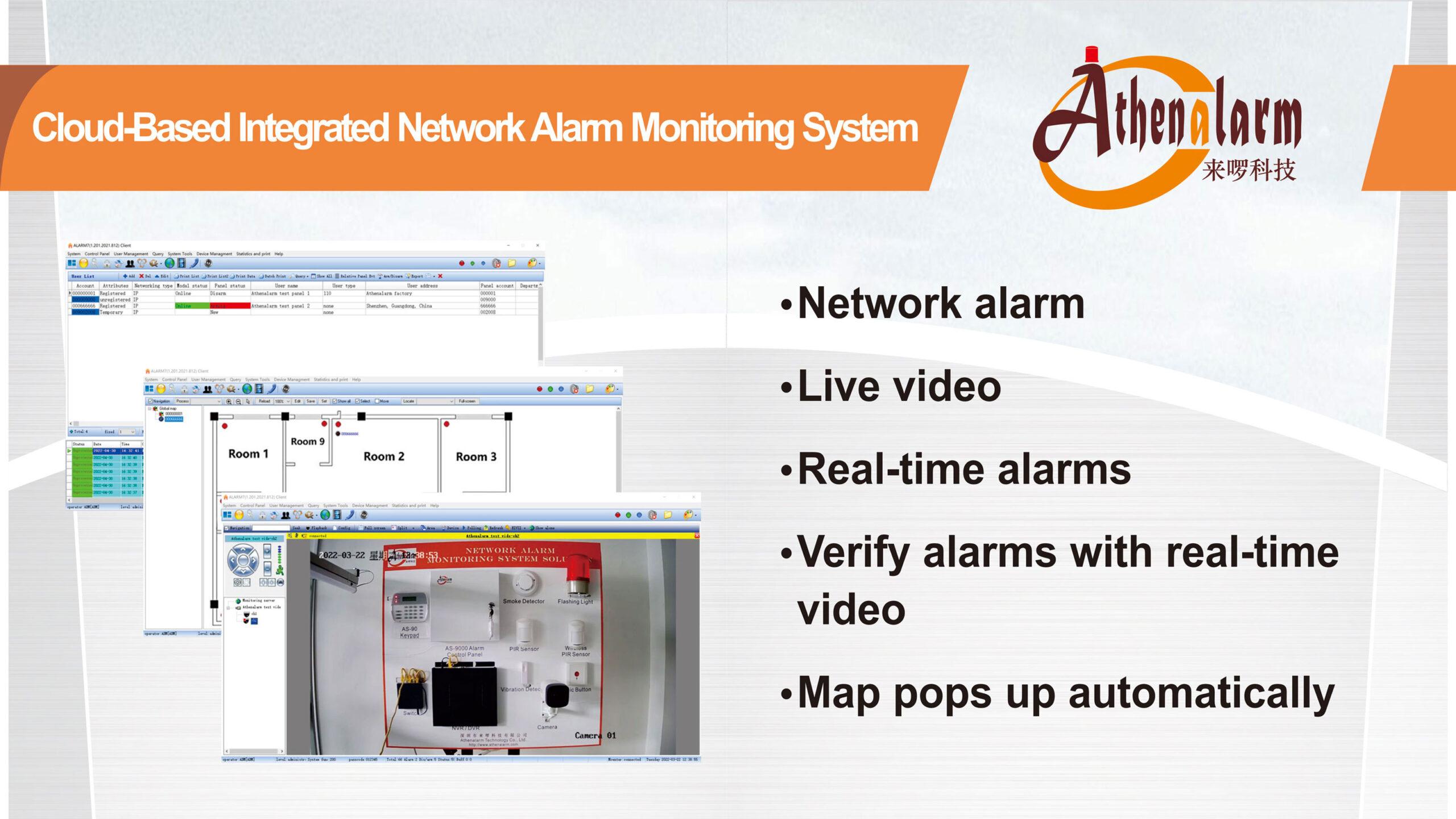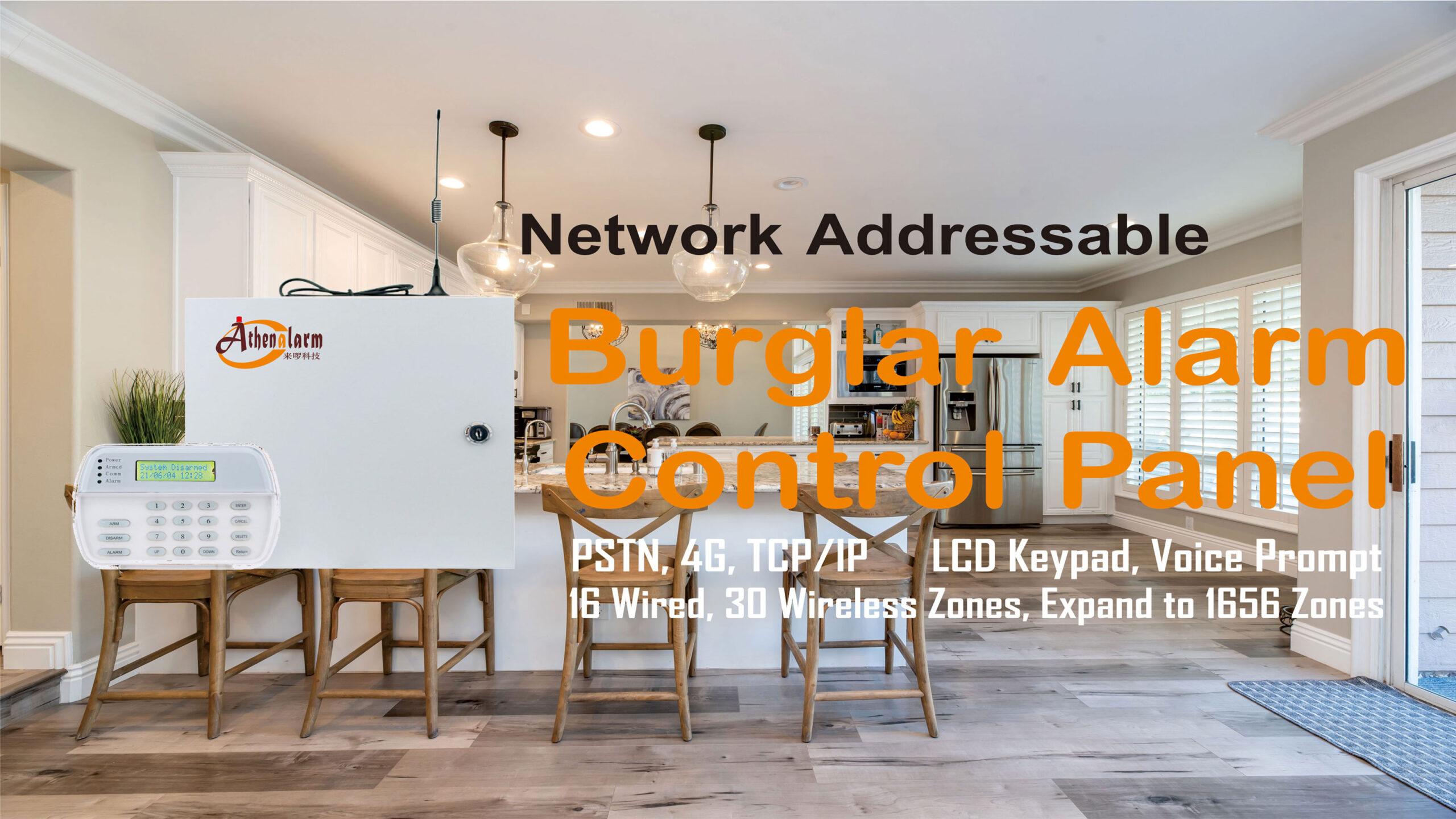



Comparison of Wired Alarm System and Wireless Alarm System
Wireless alarm systems do have many advantages: easy to operate, no wiring, beautiful and so on. But from a security point of view, there is a big gap between wireless alarm systems and wired alarm systems.
- Poor anti-interference ability. It is easy to cause false positives and false negatives due to high-frequency interference or other influences. When using a mobile phone at a distance of about one meter near some wireless alarm systems, it will cause an alarm.
- Non-professional installation, poor anti-destructive ability. Almost all wired professional alarm control panels adopt the structure that the alarm control panel and the keypad are separated. During installation, the alarm control panel is generally recommended to be installed concealedly. Only the keypad is in a conspicuous place, and the keypad also has a tamper function. This structure can better prevent intruders from destroying the alarm control panel. Almost all wireless alarm control panels are integrated with alarm control panels and keypads (some without keypads). They use plastic shells and have a more beautiful appearance design. They are generally installed in more conspicuous positions. This structure is very vulnerable to intruders. Moreover, most wireless alarm control panels use standard connectors for wiring, and intruders can stop the alarm as long as they unplug the siren line.
- Same frequency interference problem. This is the fatal weakness of the wireless alarm system. As long as one button of the same remote control is pressed, the wireless alarm control panel cannot correctly receive the alarm information from the detector due to co-channel interference, and the entire alarm system will be invalid. For this problem, some manufacturers have adopted the method of interference identification and alarm, that is, when the alarm control panel finds long-term continuous interference, it thinks that someone deliberately interferes and sends an alarm. This method can solve the problem of malicious interference to a certain extent. But generally the time to identify interference is more than 30 seconds. This time is enough to destroy the alarm control panel.
- Confidentiality issues. At present, most wireless alarm control panels in China use 2262 remote control chips. The code system is 8-digit ternary, and there are only more than 6,000 codes in total. The probability of repeated codes is relatively high, especially in the case of a large number of community application users. Undoubtedly, the possibility of repeated codes is greatly increased. This code system is also easy to crack by scanning the code, and the security is very poor. A small number of products adopt rolling codes, which greatly enhances the confidentiality.
- Trigger delay issues. In order to save power, almost all wireless detectors adopt trigger delay technology, that is, they will not be triggered for a period of time after a trigger. This delay is generally 2-4 minutes. As long as an intruder interferes with a trigger, there is enough time to destroy the alarm control panel.
- Backup battery problem. The wired alarm control panel generally uses a 4-7AH battery, which can work continuously for more than 18 hours when there is a power failure. Due to the volume problem, the wireless alarm control panel can only use small-volume batteries, such as AA batteries, for backup. In order to reduce the cost of sales, some manufacturers are not equipped with batteries when they leave the factory, and users use non-rechargeable batteries as backup batteries. Some manufacturers also use rechargeable batteries with relatively poor quality. The power supply time of the battery is greatly shortened after several charges, which cannot meet the prevention requirements of continuous work without power for 18 hours.
- Connection capacity issues. Part of the wireless alarm control panel has no network transmission capability, and can only alarm or use locally. Among the products with networking transmission capability, some of them use custom protocols, and there are problems with compatibility and networking capabilities. Some of them support standard protocols such as CID and 4+2 transmission formats, but the standard transmission functions are generally reduced, and the transmittable information is reduced a lot.
To sum up, there is a gap between the wireless alarm system and the wired alarm system in many aspects. Wireless alarm system and wired alarm system can be positioned as civil-grade products and professional-grade products. If the security requirements are high, it is better to choose professional-grade wired alarm systems. If it is required to be easy to install and operate, and beautiful in appearance, use civilian-grade wireless alarm systems. There are still many wireless alarm systems with good performance, using anti-collision interference technology, two-way wireless technology, etc. to solve or balance the security problems of the wireless alarm system, which greatly improves the system security.
